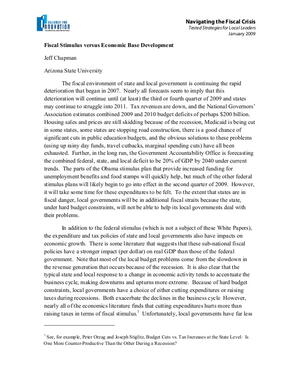
The fiscal environment of state and local government is continuing the rapid deterioration that began in 2007. Nearly all forecasts seem to imply that this deterioration will continue until (at least) the third or fourth quarter of 2009 and states may continue to struggle into 2011. Tax revenues are down, and the National Governors’ Association estimates combined 2009 and 2010 budget deficits of perhaps $200 billion. Housing sales and prices are still skidding because of the recession, Medicaid is being cut in some states, some states are stopping road construction, there is a good chance of significant cuts in public education budgets, and the obvious solutions to these problems (using up rainy day funds, travel cutbacks, marginal spending cuts) have all been exhausted. Further, in the long run, the Government Accountability Office is forecasting the combined federal, state, and local deficit to be 20% of GDP by 2040 under current trends. The parts of the Obama stimulus plan that provide increased funding for unemployment benefits and food stamps will quickly help, but much of the other federal stimulus plans will likely begin to go into effect in the second quarter of 2009. However, it will take some time for these expenditures to be felt. To the extent that states are in fiscal danger, local governments will be in additional fiscal straits because the state, under hard budget constraints, will not be able to help its local governments deal with their problems.
This article is supporting documentation for the Alliance for Innovation Navigating the Fiscal Crisis white paper.
